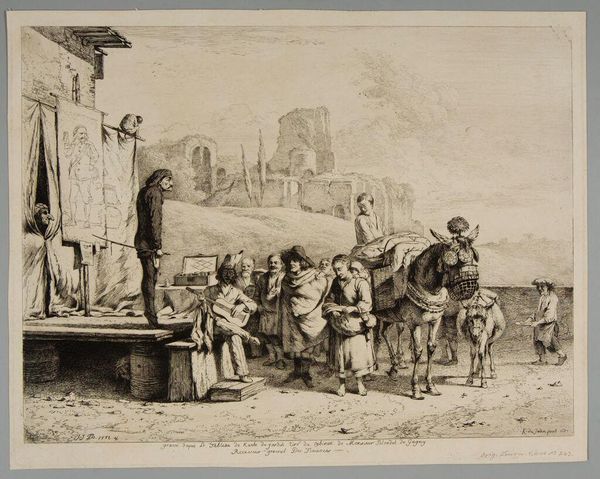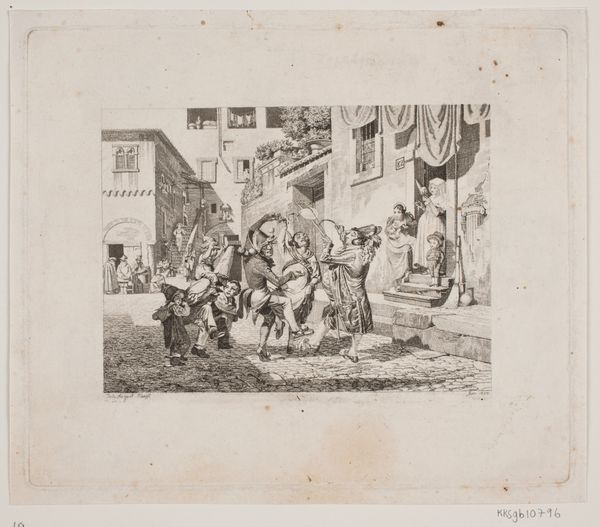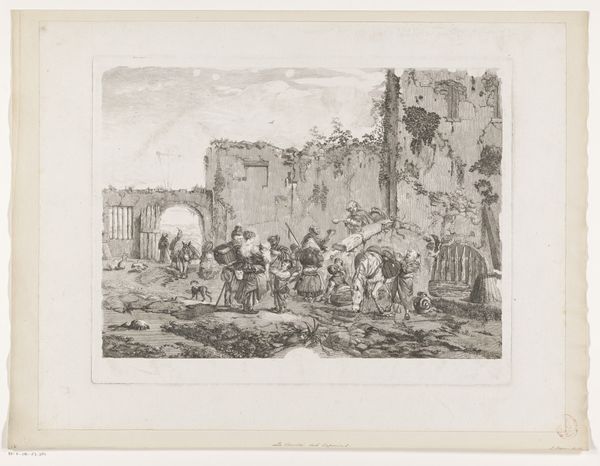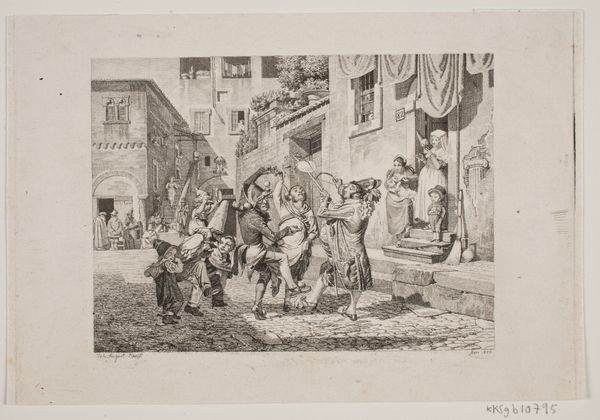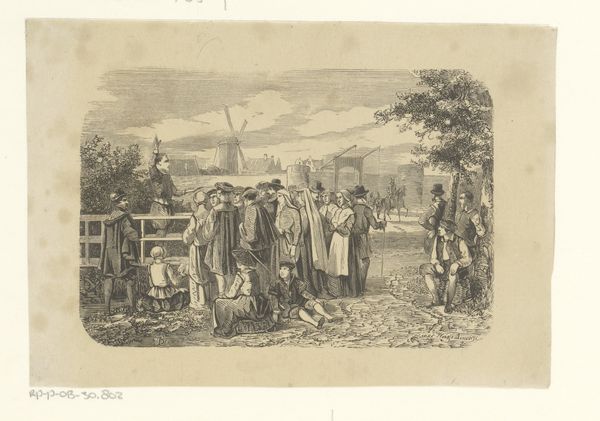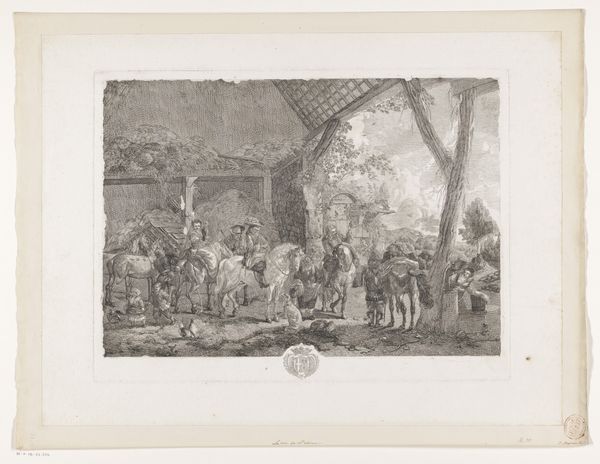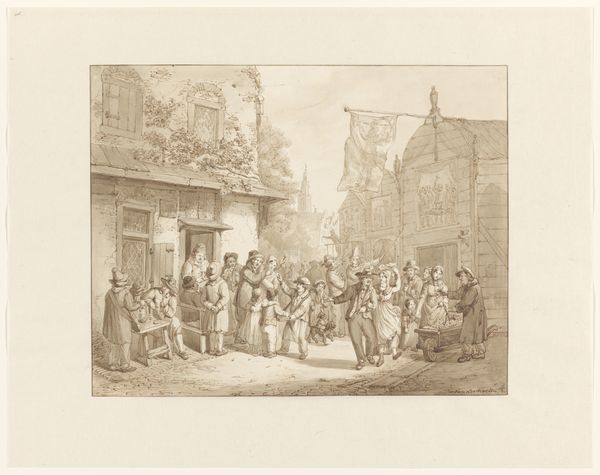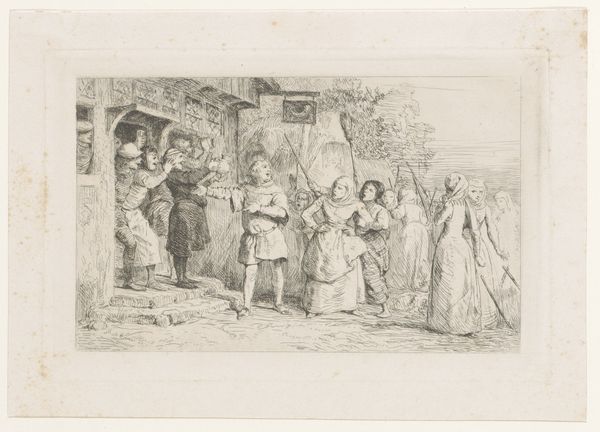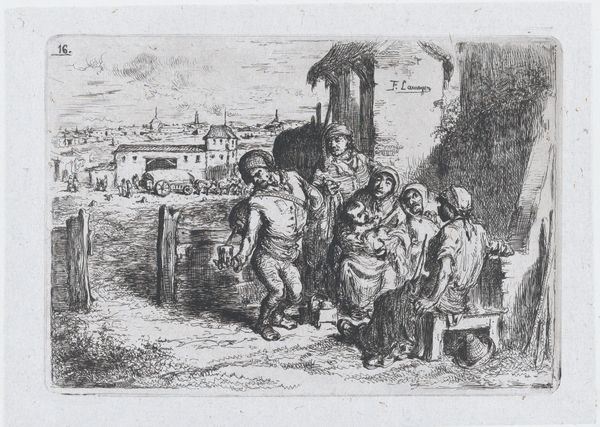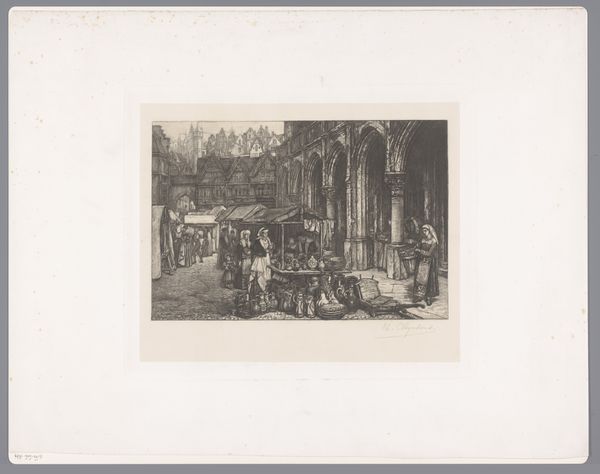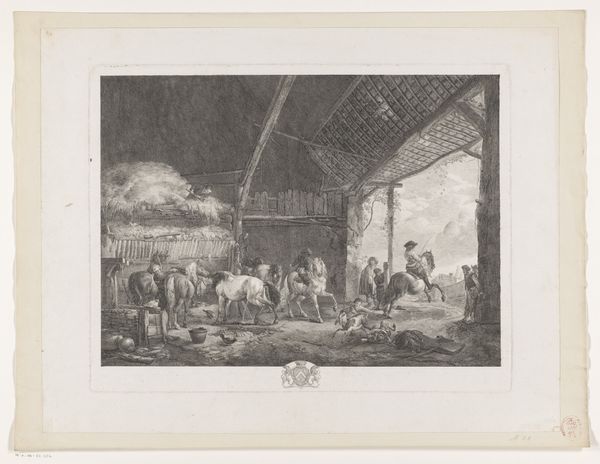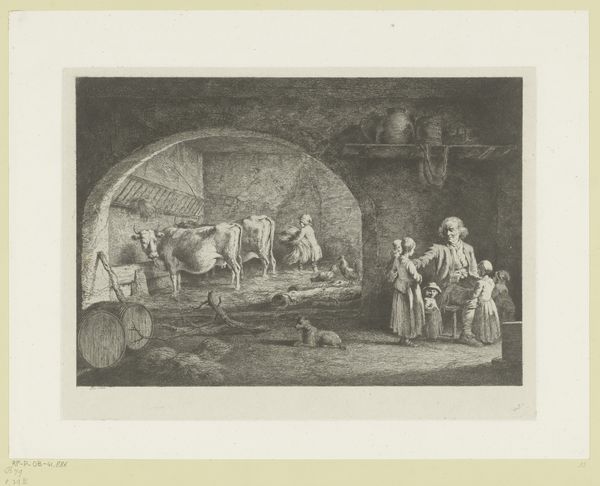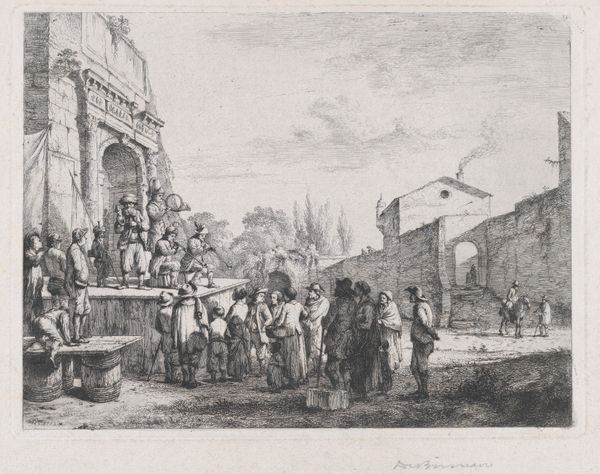
Dimensions: height 270 mm, width 340 mm
Copyright: Rijks Museum: Open Domain
Editor: Here we have "Landscape with Charlatans on a Stage," an etching by Jean Jacques de Boissieu from 1772. I'm struck by how this everyday scene is elevated with what looks like classical ruins in the background; there's this real mix of high and low. How do you interpret this kind of juxtaposition? Curator: It's fascinating, isn’t it? Think about the socio-political landscape of the late 18th century. The artist positions these charlatans – these public performers, right? – against a backdrop of crumbling Roman architecture, hinting at the decline of empires and perhaps questioning the very foundations of authority. Consider how these performers entertained and potentially swindled the public. It suggests a commentary on the gullibility of the masses and the manipulative power of spectacle. Does this blend of landscape and social commentary offer any clues to you? Editor: Yes, it does! It makes me wonder if de Boissieu is also commenting on the role of the artist, maybe implying that art can also be a kind of performance, or even a deception? Curator: Exactly! And remember, Romanticism was emerging then, focusing on individual experience, but often tinged with social critique. Look at the audience's expressions, their clothes; they represent a specific class and the concerns of the time. It shows how the artist sees this population, versus, perhaps, the noble figures we saw in earlier art history? What does it tell us about de Boissieu and his biases, then? Editor: That’s really insightful. It shifts my focus from just the scene itself to the artist's own perspective and what he's trying to say about the society he lived in. Curator: Indeed. Art often serves as a mirror reflecting both the artist and their world. Understanding that relationship gives us a much richer understanding of a piece.
Comments
No comments
Be the first to comment and join the conversation on the ultimate creative platform.
